The Colombian coast is home to powdery white beaches, towering mountain ranges, and colorful historic cities – aka, everything you could want and more! Whether you’re looking to wander through the jungle or sip some of the tastiest coffee in the country, there’s something for every type of traveler, and this itinerary covers the best of everything. It’s also one of the best places to spend Christmas in the country — if you’re looking for a tropical holiday that is!
There’s a lot to see along the Atlantic coast, so I recommend spending at least a week exploring the region. From traveler hotspots like Cartagena’s historic center to undiscovered beaches in Parque Tayrona, this one week itinerary covers all the highlights of the Colombian coast.
So grab your sombrero vueltiao and your sunscreen and let’s get exploring!
Need help planning your itinerary through the Colombian Caribbean? Leave a comment below with any questions and I’d be happy to help you personalize your trip!
This site uses affiliate links to share products that I use and love! If you click on one of the links I may receive a small commission at no additional cost to you. This helps keep my site up and running — thank you!
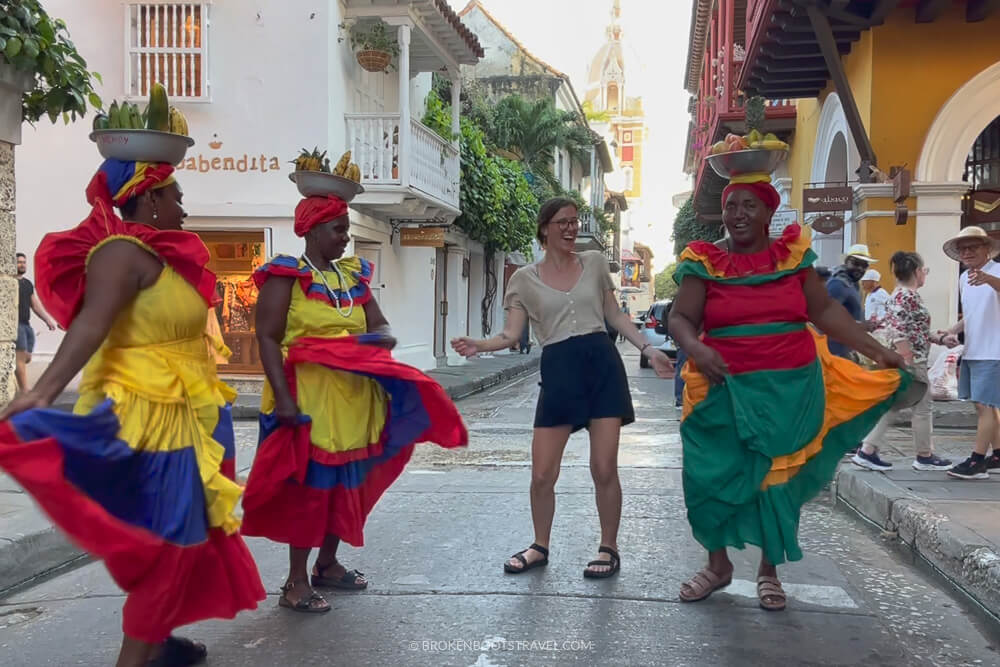
Colombia Quick Links
✈️ Flights – Use Kiwi.com or WayAway to find the cheapest and fastest flights to Colombia
🛏️ Accommodation – Find the best places to stay throughout Colombia on Booking.com
✅ Get Insured – I personally use Safety Wing Nomad Insurance for my travels all around the world! VisitorsCoverage is another great option.
🚗 Rent a Car – Find the best deals for a Georgia road trip on RentalCars.com
🗺️ Find Things to Do – Check out Get Your Guide or Viator for exciting adventures all around Georgia
☎ Buy a Sim – Airalo offers eSIMS for over 200 countries and regions
Looking to spend more time in Colombia? Check out my complete 3-week itinerary!
Getting Around the Colombian Coast
The Colombian coastline is well connected via buses. Most destinations on this one week itinerary are within a few hours of each other, meaning you can take early morning/evening buses to maximize time if desired.
If you want to make the most of your itinerary through the Colombian coast, I highly recommend renting a car for a weeklong trip. Trust me, you’ll want to pull over for all the photo ops and roadside arepas de huevo anyway, so it’s a worthwhile investment!
The Best Time to Visit the Colombian Caribbean
The Colombian coast is almost always hot. The near-constant sunshine and warm weather is great for a beach holiday, but it’s important to prepare accordingly, especially during the hottest parts of the day, usually around 12-2pm.
Temperatures on the Colombian coast range between 26-32 degrees celsius (80-90 degrees fahrenheit) daily. The driest months of the year are usually December-March, but it’s important to note that December is a holiday season in Colombia, so popular tourist sites may be more crowded. Late March/early April during Holy Week is also a popular time for Colombian travelers.
Day 1: Cartagena
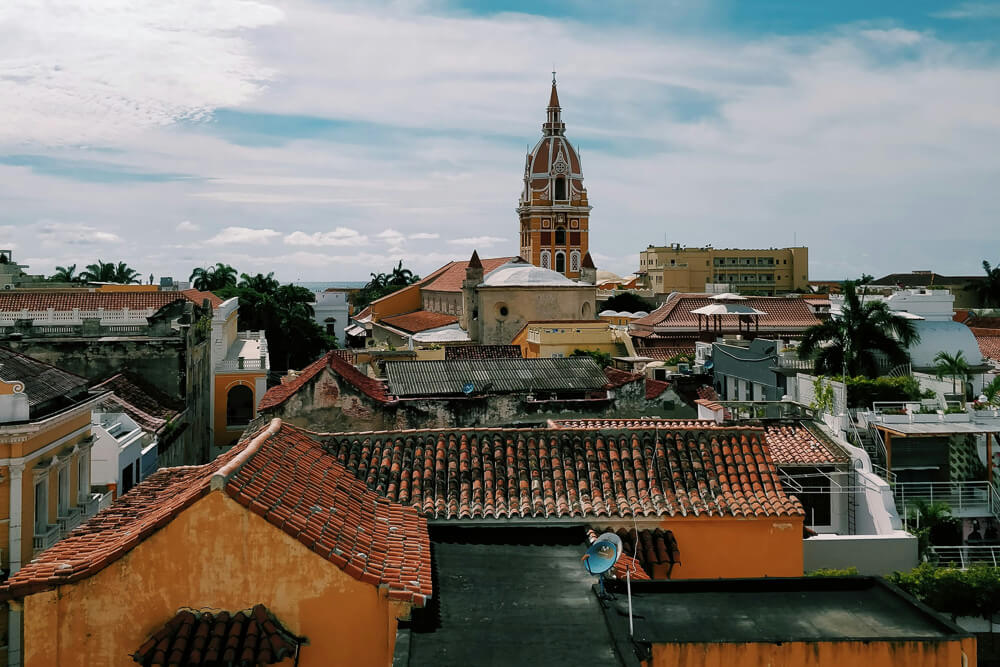
Cartagena is Colombia’s biggest tourist destination, so it’s one of the best arrival cities in the country. The Rafael Nunez airport offers both international and domestic flights, and it’s easy to travel by bus from any major city like Medellin or Bogota.
The city of Cartagena itself is one of the best-preserved colonial cities in the country. The historic center is known as the “walled city” thanks to the towering stone walls that surround it, and are actually the best-preserved fortification in South America.
There’s plenty to do in the historic city itself, from wandering around the colorful buildings with your camera in hand to sampling sweets at El Portal de los Dulces. Next, wander through Parque Centenario to the eclectic Getsemaní neighborhood, a great place to explore Cartagena’s mural scene and grab a bite to eat.
Finally, end your day with a visit to the Castillo San Felipe, a towering 16th century fortress with stunning views of the Cartagena skyline. It’s one of the best places to view the sunset in the entire city and a quintessential piece of Cartagena’s story.
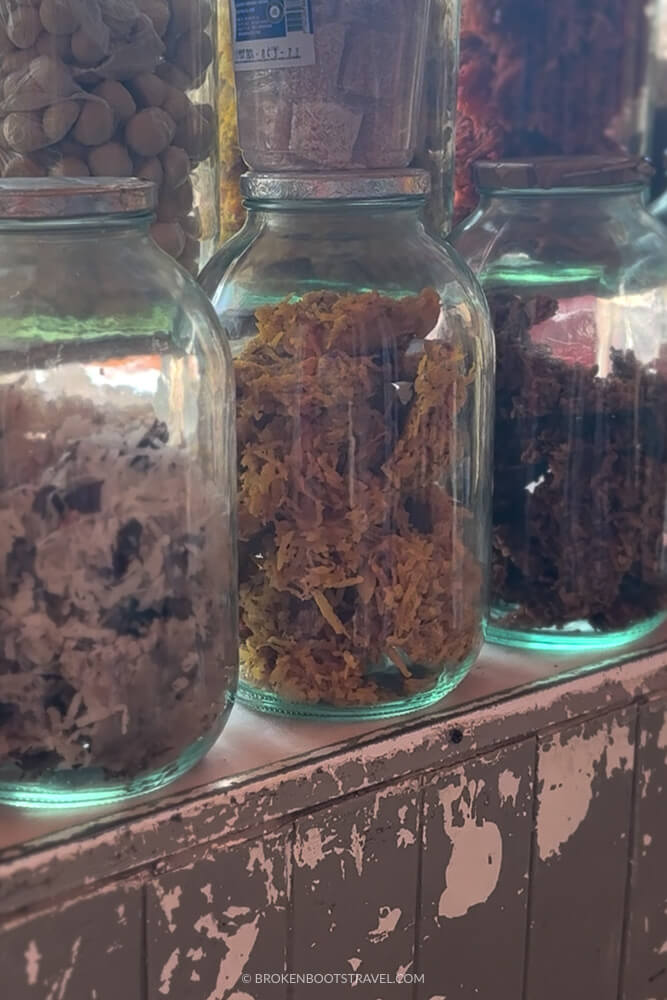
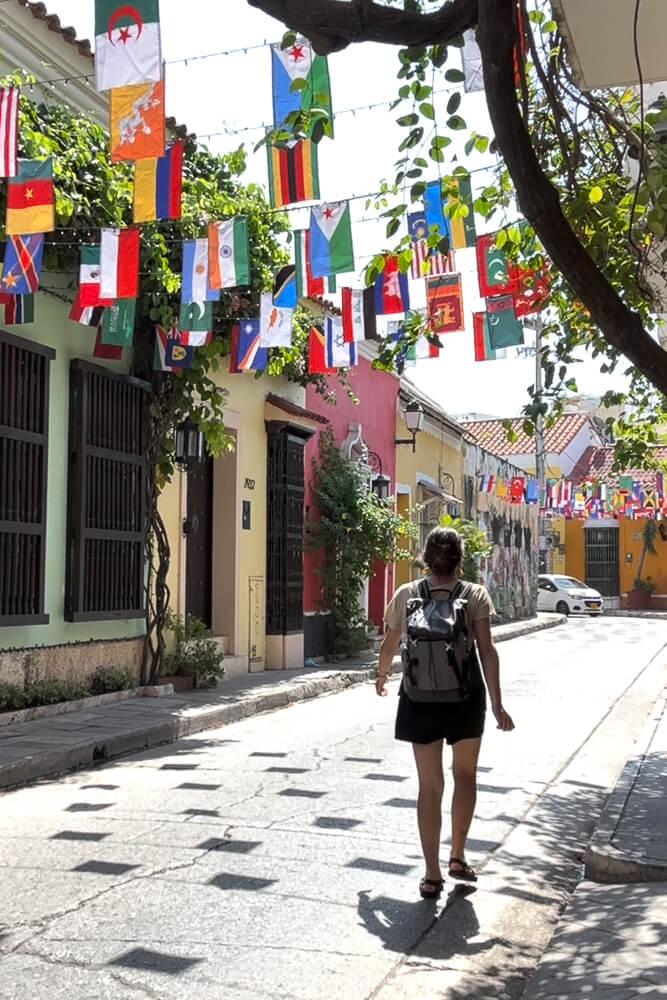
Where to Stay in Cartagena
The two most popular and safe places to stay in Cartagena are inside the Walled City, or in the bohemian neighborhood of Getsemaní. Both are walking distance from Cartagena’s major tourist attractions and offer everything from budget backpacker hostels to luxury hotels.
You can explore all accommodation options in Cartagena on Booking.com or check out some of the recommended places below.
👑 Dorado Plaza – Traditional backpacker hostel with terrace and game rooms
🏠 Casa Lorenzo – Colorful boutique hostel located in Old Town Cartagena
🌿 Los Patios Hostel – Hostel located in a traditional home with a rooftop pool
🙂 Life is Good Hostel – Social hostel located in a home in Getsemaní neighborhood
Day 2: Isla Barú
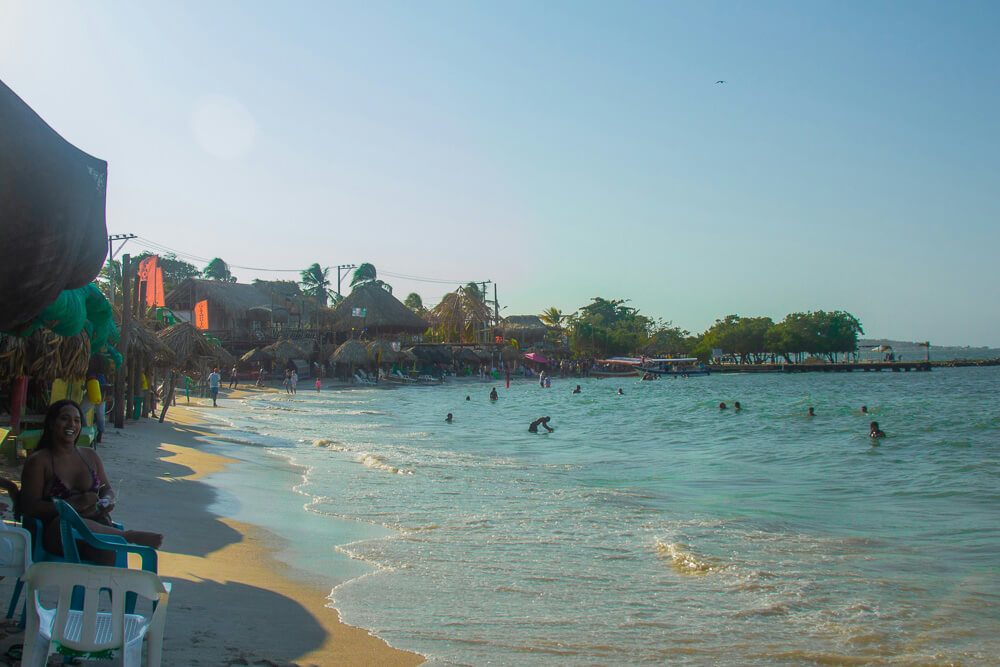
A beach day is a must-do on any itinerary along the Colombian coast, and Cartagena is home to some of the most extraordinary beaches in the country. Whether you’re looking for a tranquil day spent on the sand, snorkeling amongst colorful coral, or a party at a beach club, the beaches near Cartagena offer everything you could look for and more.
If beach bars and rumba are your style, head to Isla Baru, the quintessential beach hangout. It’s a great place to get to know travelers and locals alike and spend the day with a cocktail in hand. Check out this tour to Playa Blanca, which offers beach club access and snorkeling with bioluminescent plankton!
If you’re looking for more laid-back vibes, consider a trip to the Rosario Islands. These 28 barrier islands are home to some of the best snorkeling in the world and with white beaches and blue water, embody true Caribbean vibes.
Love Caribbean vibes? Check out my guide to Colombia’s San Andres island, a Caribbean paradise in the country!
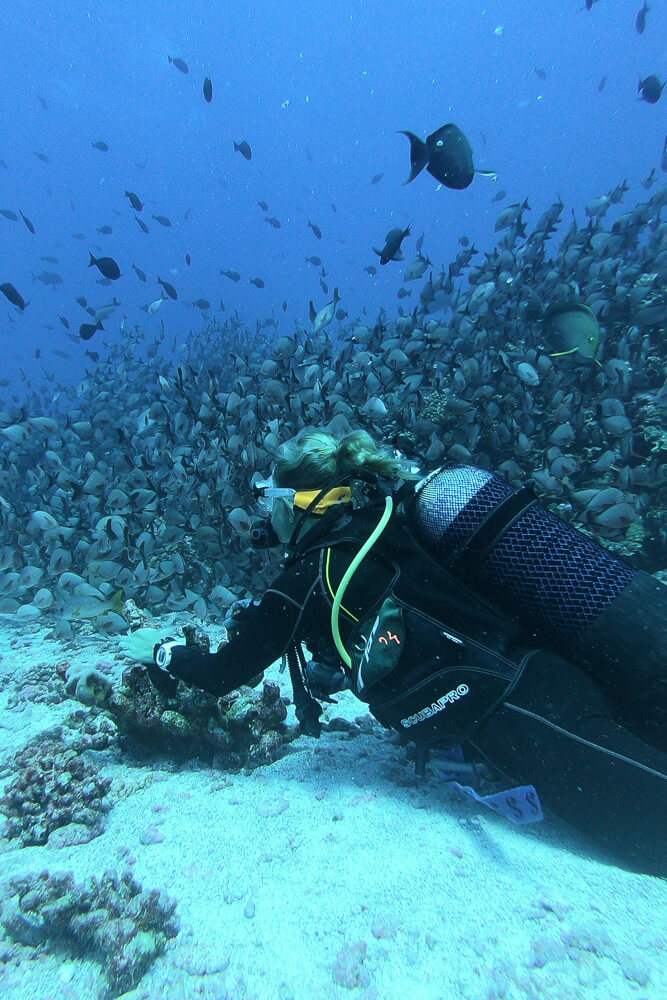
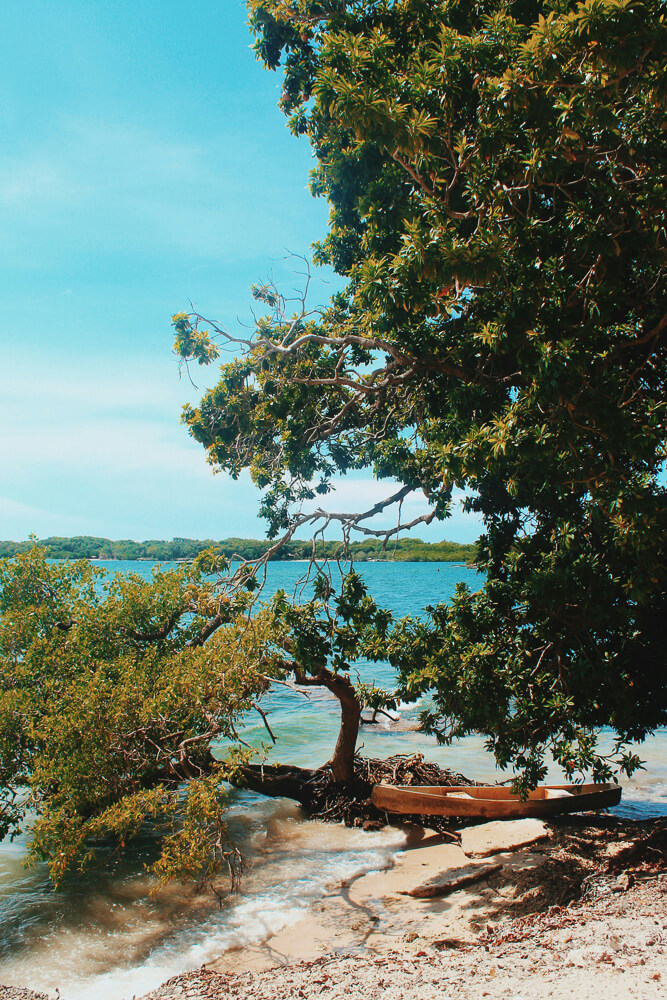
How to Visit Cartagena’s Islands
You can visit Cartagena’s islands with a guided tour, or independently if preferred. If you’ve rented a car, you can travel on your own time and make the most of your beach time outside the city.
To visit Isla Baru independently, you can grab the shuttle outside Hostel Mamallena in Getsemaní, which leaves twice daily and costs 50,000 COP ($13 USD). You can also charter a boat from the Muelle Turistico Bodeguita outside the walled city. Travel time is around 45 minutes.
To visit the Rosario Islands independently, you also need to charter a boat from the Muelle Turistico Bodeguita. However, if you only have a day, I highly recommend joining a guided tour to make the most of time and visit multiple islands in the archipelago!
Day 3: San Basilio de Palenque
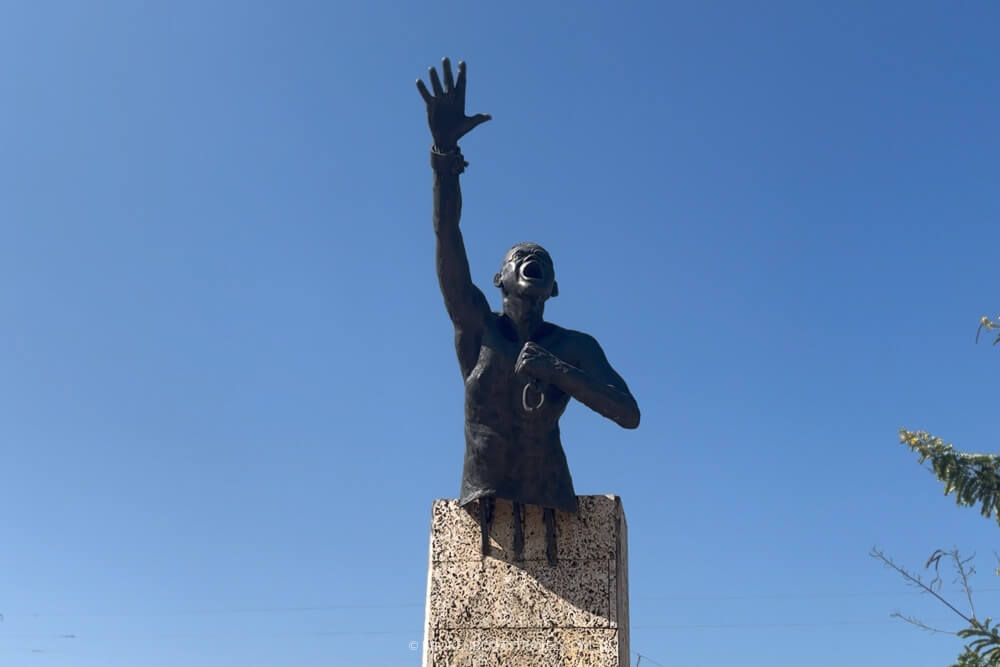
San Basilio de Palenque is one of the best day trips you can take from Cartagena – not to mention one of the most extraordinary sites in the country. Located an hour from downtown Cartagena, its home to its own unique culture, language, and traditions. I believe it’s a must-see on any Colombia itinerary.
Founded by escaped slaves in the 1600s, the town has maintained many of the African traditions of its founding members. Inhabitants of the town are dedicated to the preservation of the unique culture, from the unique language – a mix of African and European vocabulary – to traditions like medicine and spirituality.
I highly recommend visiting San Basilio de Palenque with a local guide to understand the true depth and history of this town. For Spanish speakers, my friend Neudis runs a company called Benkos Tours, or this tour from Beyond Colombia is a great English-speaking option.
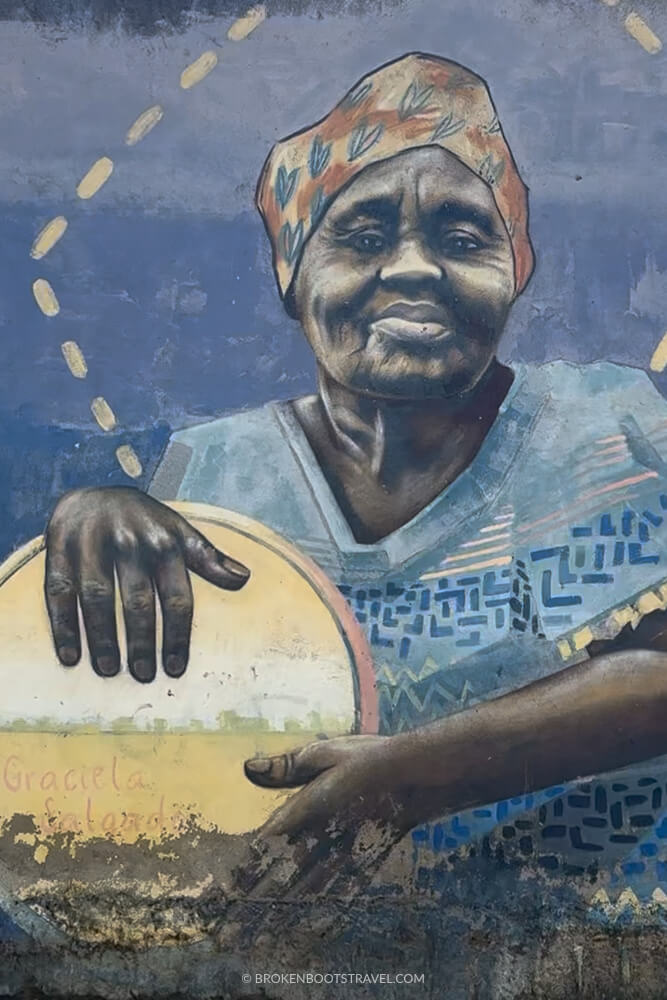
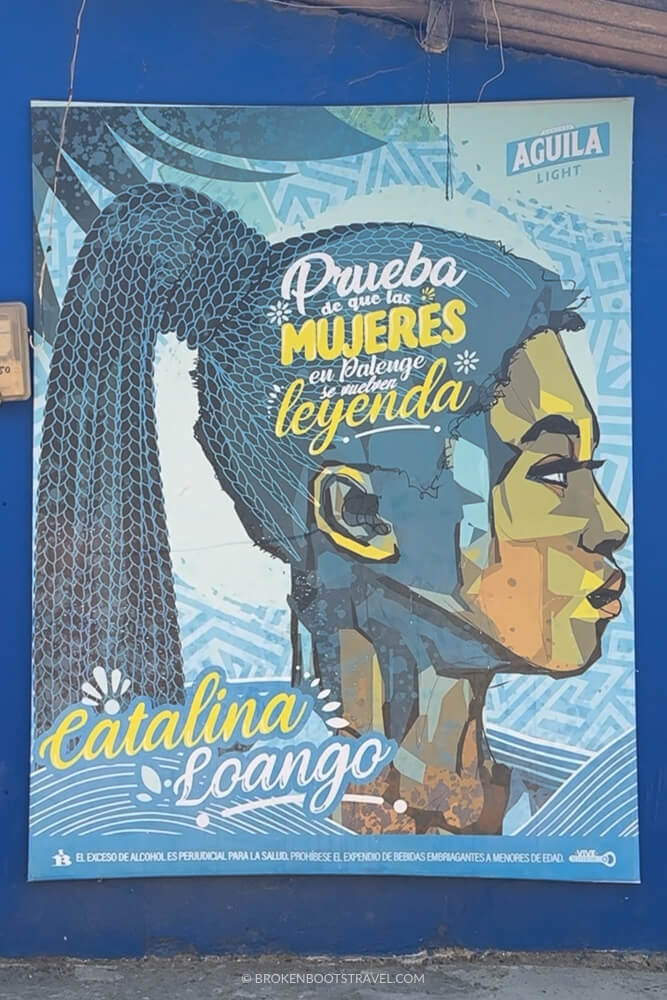
How to Get to San Basilio de Palenque from Cartagena
San Basilio de Palenque is located a little over an hour outside of Cartagena. There’s no direct public transportation to the town, so that’s yet another reason why I recommend traveling with a guided tour.
If you have your own transportation you can opt to travel independently, or take a taxi from Cartagena to Palenque. Note that with the travel time, as well as wait during your tour in town, taking a taxi is likely not a more economical option than a guided tour.
Day 4: Travel to Santa Marta
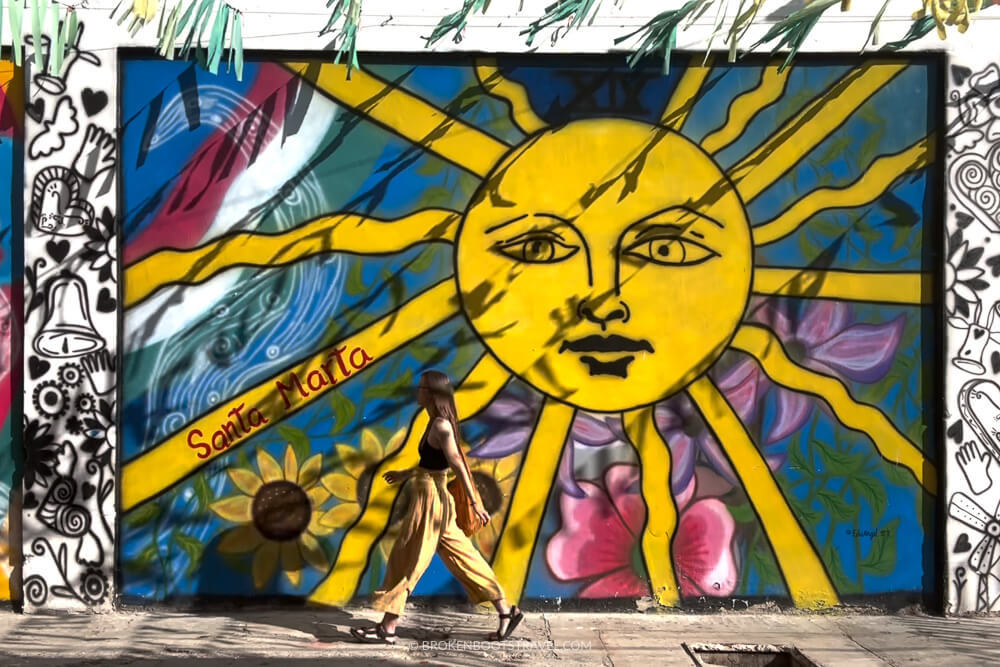
Start your fourth day traveling to Santa Marta, a coastal city located about 5 hours north of Cartagena in the Sierra Nevada Mountain Range. On the way you’ll pass through the city of Barranquilla – if you have time, I recommend spending a day or two in the city, especially if it’s Carnival season!
After arriving in Santa Marta, grab a bite to eat near the Parque de Los Novios and spend the afternoon exploring the city. Wander over to the Museo del Oro or pop into the oldest cathedral in Colombia before heading over to the malecón, the main port of Santa Marta. You’ll find plenty of coastal snacks to try – I recommend arepa de huevo – as well as a public beach where you can swim and watch the sun go down.
In the evening, head back over to Parque de los Novios for the outdoor market. You’ll be able to find everything from intricate Wayuu bags to handmade jewelry at the outdoor stalls.
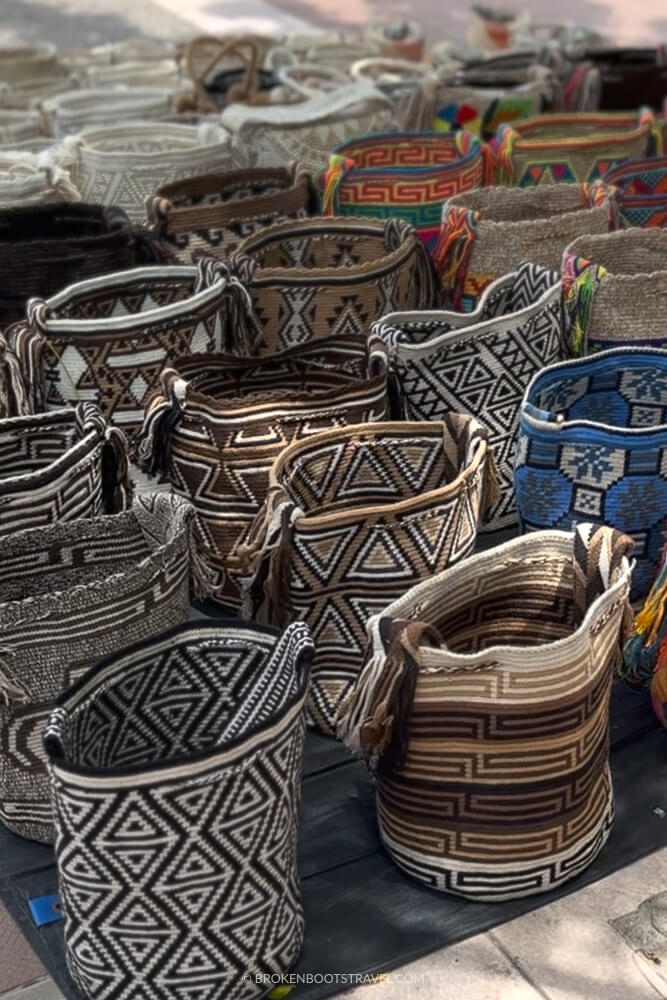
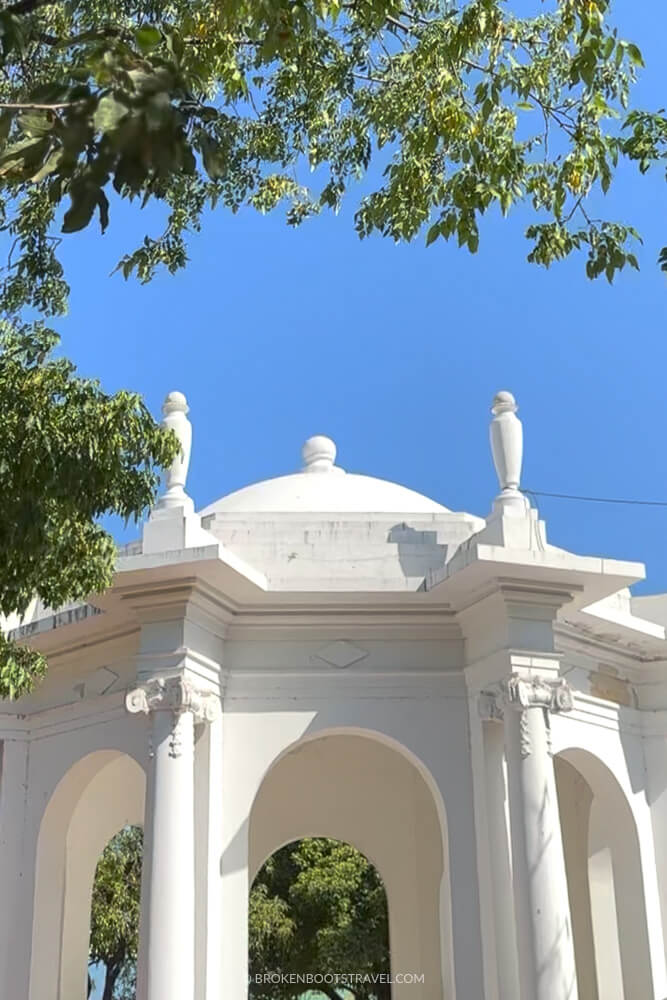
Where to Stay in Santa Marta
The best place to stay in Santa Marta is near the Parque de los Novios in the historic center. There’s plenty of accommodation to choose from in this area, plus it’s walking distance from most of the major attractions in the city. You can explore all accommodation in Santa Marta on Booking.com or check out one of the recommended spots below.
🌷 Masaya Santa Marta – Dreamy, centrally located hostel with two pools and a terrace
🍫 Cacao Hostel – Popular backpacker hostel great for meeting travelers
🤍 Calle 13 Hotel Boutique – Flower-filled hotel with on-site bar
💐 Casa Avelina Boutique – Boutique hostel with swimming pool and breakfast
Day 5: Parque Tayrona
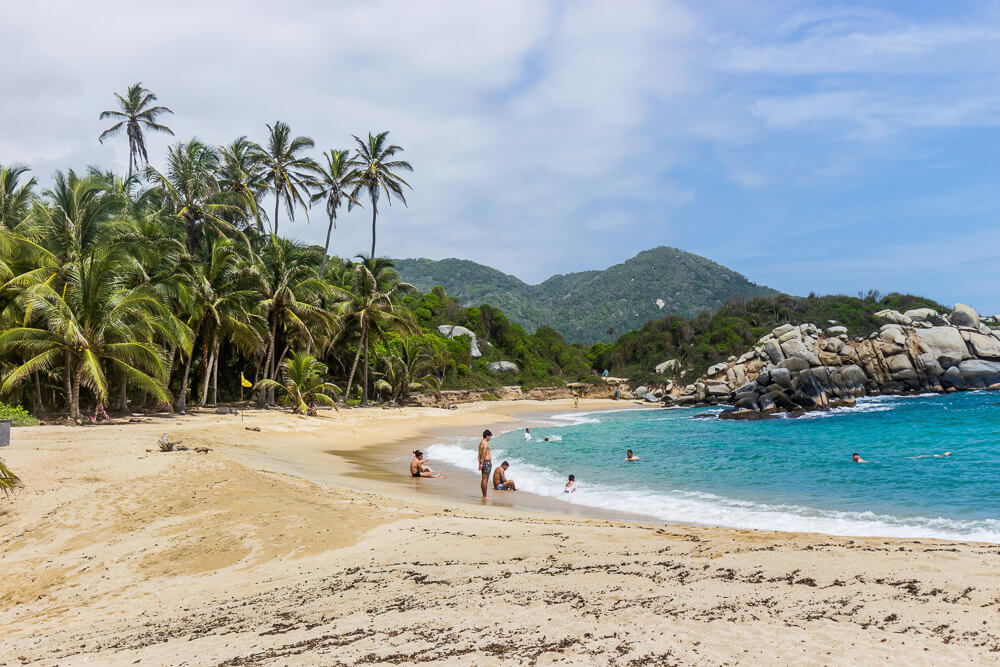
Santa Marta is the gateway to Parque Tayrona, one of the most extraordinary natural areas in Colombia! This park is a must-visit on any trip on the Colombian coast, and offers some of the most incredible beaches in the country.
The park covers over 150 square kilometers of land and sea, but with one day to spend in the park I recommend sticking to the main beaches – Cabo San Juan, Playa Brava, or Playa Cristal. Quick tip: The further you walk, the more secluded the beaches will be!
While you’re exploring the park, also keep an eye out for howler monkeys, colorful toucans, and a number of other creatures that call the park home. You can explore the many trails that wind through the park or spend the day relaxing on one of the stunning beaches.
Parque Tayrona is open daily from 8AM-5PM, though the park closes to new visitors once it reaches capacity so it’s recommended to arrive early. The park also closes twice yearly for cleansing from the indigenous community, so it’s recommended to check up-to-date closings and prices on the official website before visiting.
Want to learn more about the indigenous people of the region? Consider a hike to La Ciudad Perdida, an ancient city built by the Precolumbian Tayrona people!
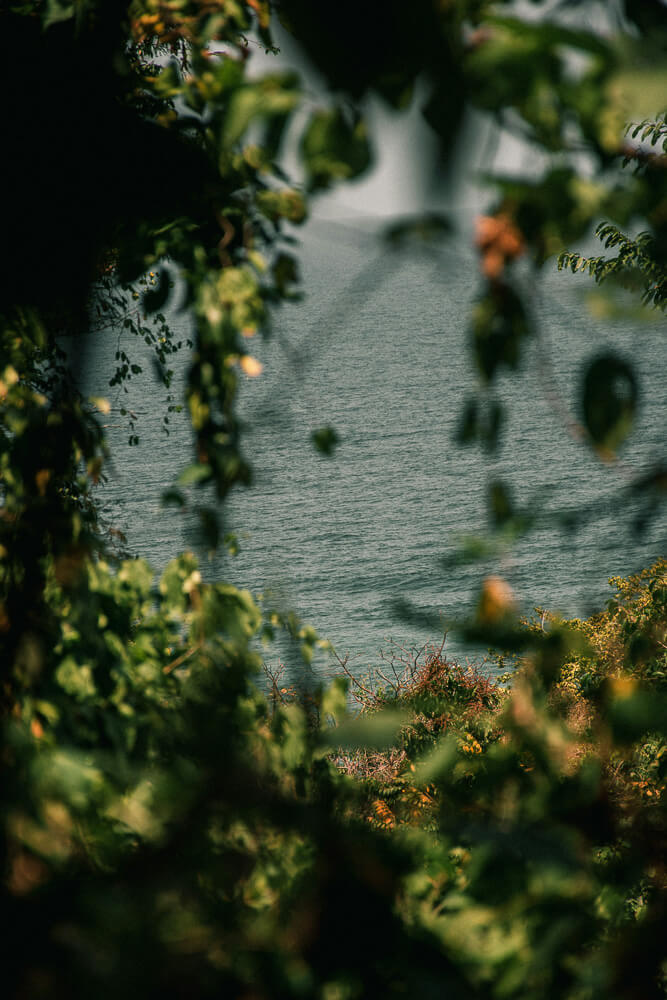
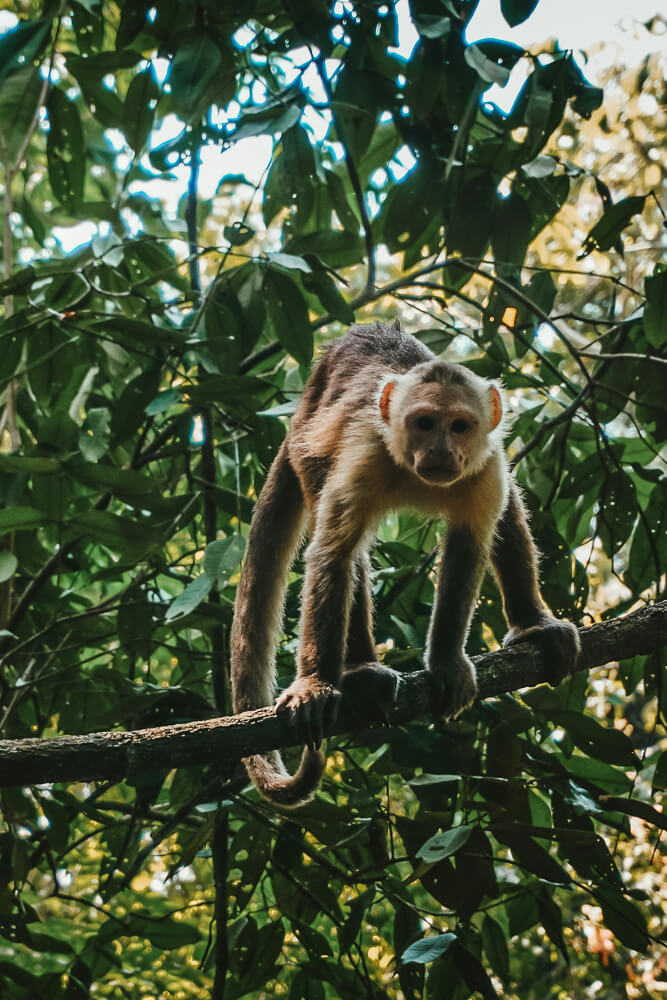
How to Get to Parque Tayrona from Santa Marta
Parque Tayrona is located about 40 minutes from Santa Marta. It’s possible to visit independently, or you can join a guided tour to make better use of time.
The two most popular ways to visit Parque Tayrona are via bus or via boat. Buses to Parque Tayrona can be found leaving from the Santa Marta Public Market about every 30 minutes, with a cost of around 15,000 COP ($4 USD). The bus arrives and leaves from the El Zaino entrance of the park where you can then access many of the most popular beaches.
Alternatively, you can take a boat to Parque Tayrona. First, catch a bus to Taganga, leaving from in front of the Santa Marta Malecon. From Tanganga, boats will take you directly to Cabo San Jan for around 80,000 COP ($20 USD).
Day 6: Minca
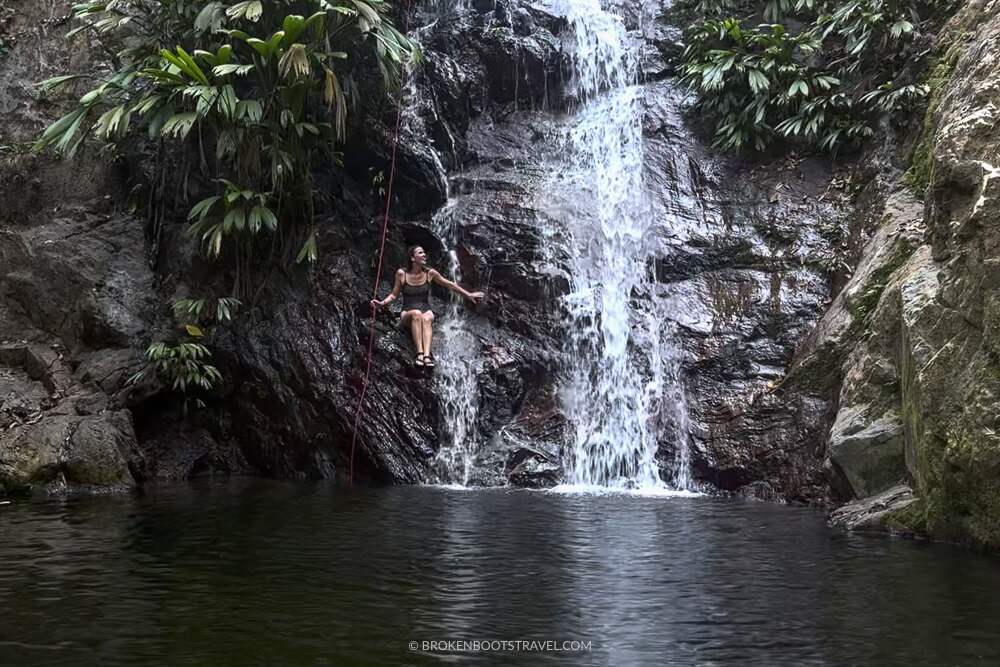
After a day spent on the beaches of Tayrona, it’s time to explore the jungles of Minca. This town, located about 45 minutes outside of Santa Marta, is a whole different world from the bustling city. Filled with birds, waterfalls, and coffee, it’s one of the most beautiful places in the country.
Minca is filled with opportunities to experience the natural beauty of the area, from visiting a coffee farm to exploring the many waterfalls in the area. It’s also home to one of the largest concentrations of birds in the country, so it’s a great place to go on a bird-watching tour!
I recommend renting a motor scooter in the town of Minca to best explore the area, or you can stick to places near the town center on foot. Either way, you’re guaranteed a relaxing, tranquil day in one of the most beautiful places in the world.
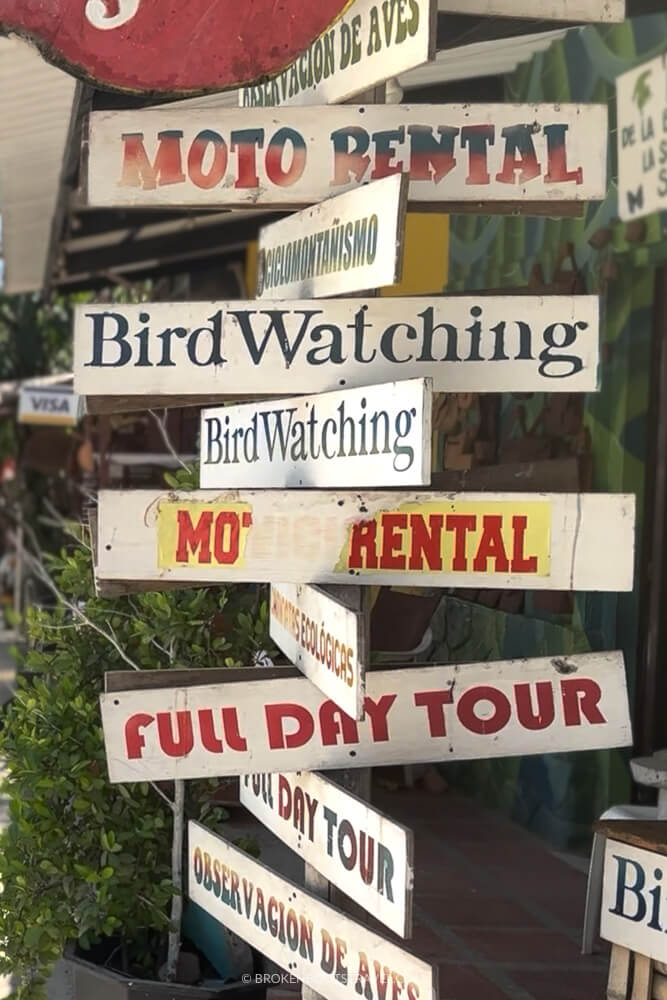
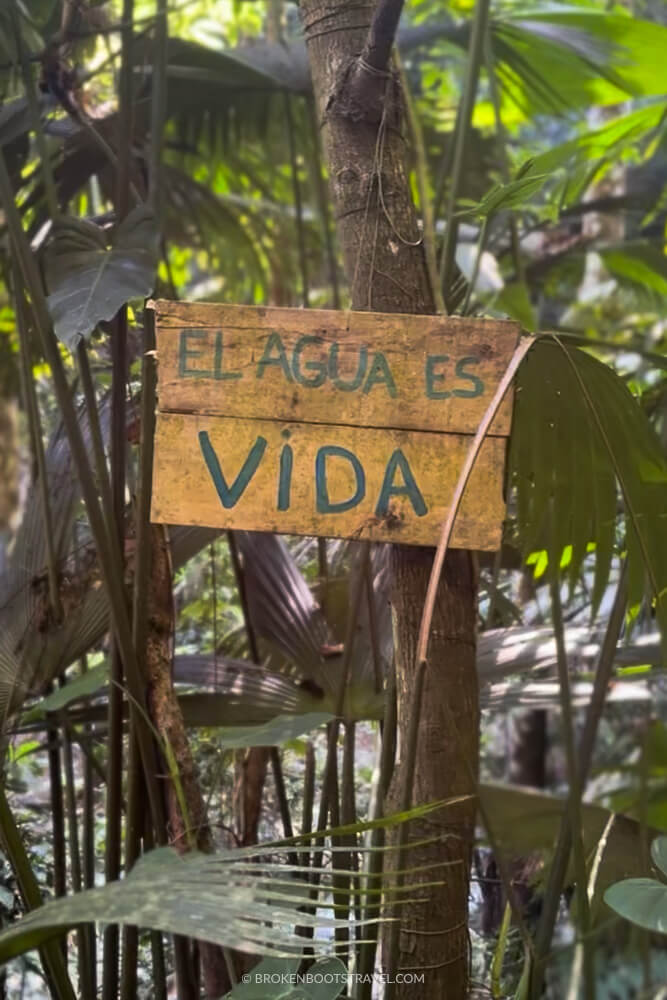
How to Get to Minca from Santa Marta
To visit Minca independently from Santa Marta, catch a collectivo (shared minivan) from Santa Marta’s Public Market to Minca. The ride is about 45 minutes each way.
If you prefer a more relaxing ride, you can also join a day tour to Minca. You can search for all activities in Minca on Get Your Guide.
Day 7: Return to Cartagena
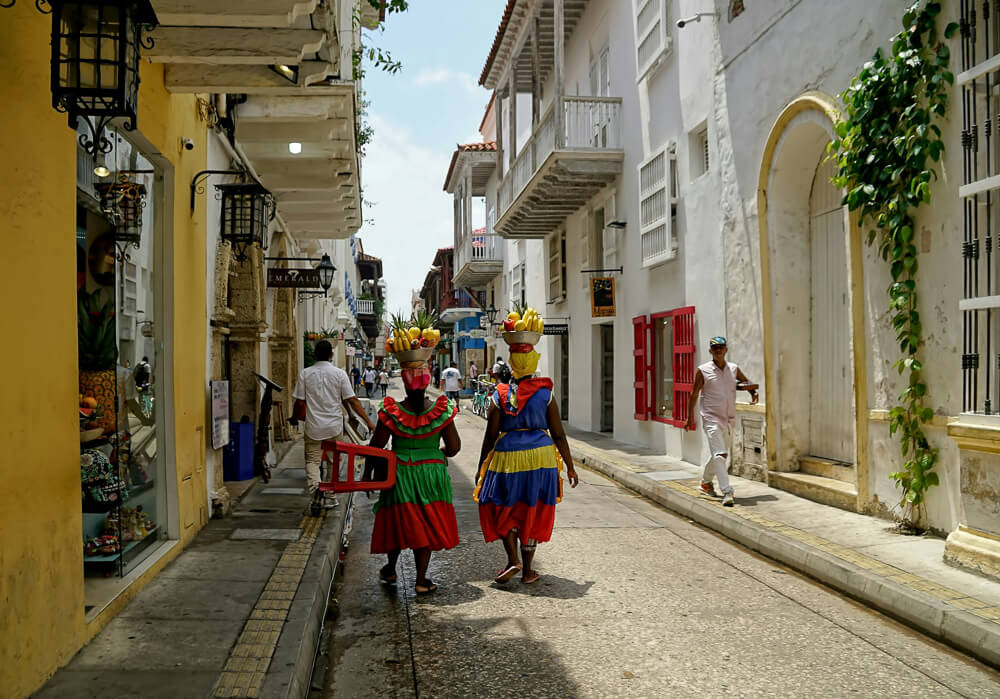
On our final day exploring the Colombian coast, it’s time to travel back to Cartagena for the flight home. If you’ve rented a car you can do this at your own pace, otherwise you can catch a bus bag to Cartagena from the Santa Marta Bus Terminal. Buses take around 4-5 hours.
Alternatively, you can opt to continue your trip from Santa Marta, leaving from the Simón Bolivar International Airport. This will give you a little extra time to spend in the city, so you can lounge on the public beach, enjoy brunch around Parque de Los Novios, or even take a day trip from the city. After all, there’s plenty to see and do in the department of Magdalena.
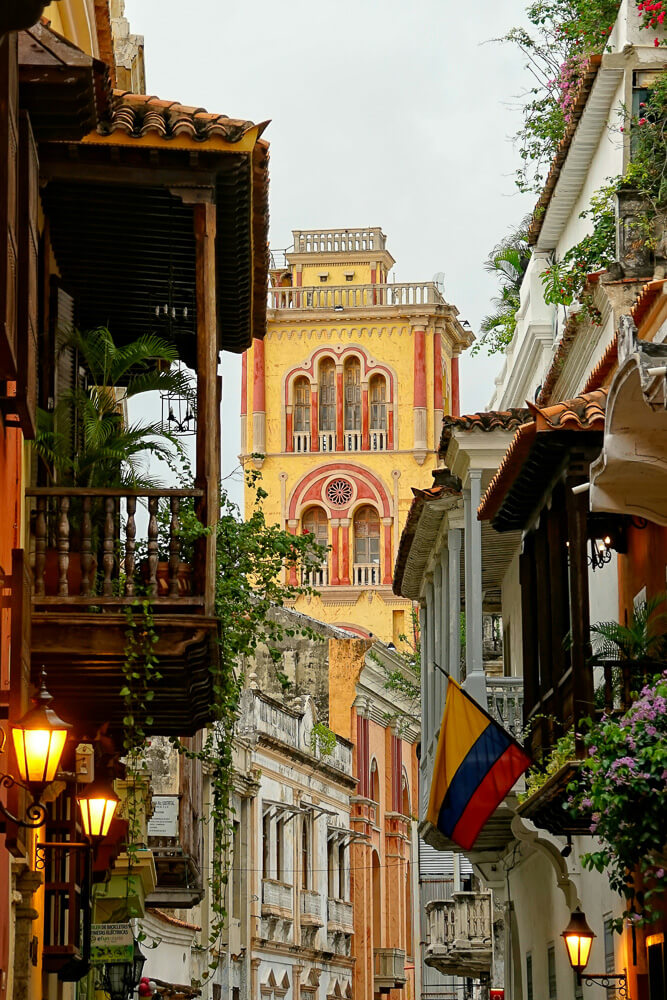
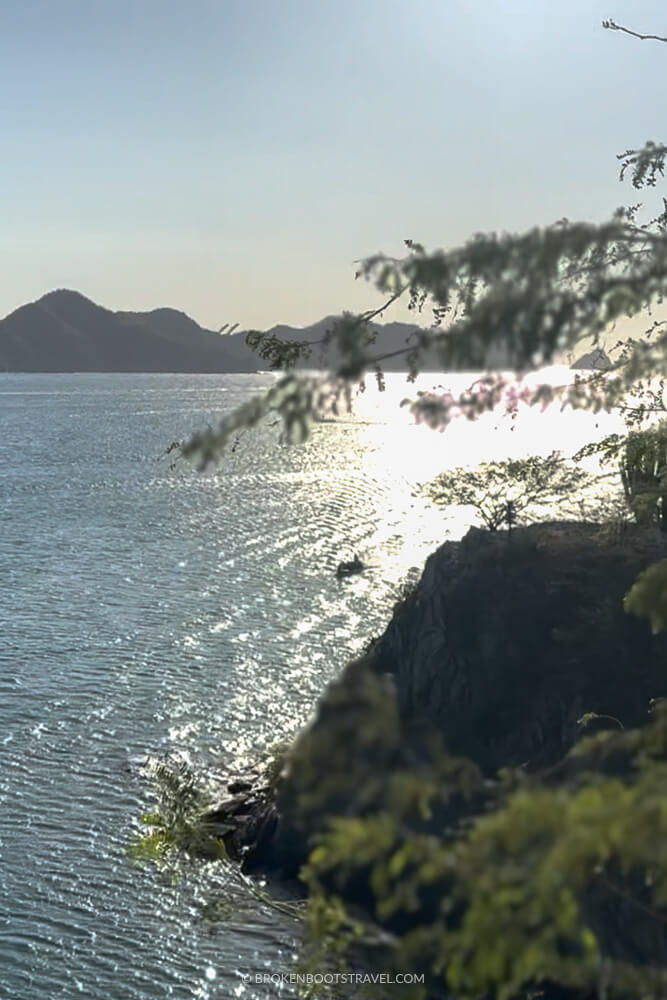
Continue Your Trip
Want to keep exploring Colombia? There’s plenty more to add to your itinerary along the Colombian Coast, from the deserts of La Guajira to the remote island of Providencia, so you can extend your Colombia itinerary in the same region if you wish! Some of the biggest celebrations in the country also take place in this region, from the Vallenato Festival to the world’s second-largest Carnival!
If you’ve got time to spare, head on down to eje cafetero for some coffee culture, or dance the night away in the salsa capital of Cali. Or better yet, check out all my Colombia itineraries to help you plan the perfect trip.
I’m currently on a mission to visit all 32 departments of Colombia, so I’ve explored many different regions of the country and written extensively about all things Colombia. If you want specific help planning your own Colombia itinerary, leave me a message below!
What to Pack for Colombia
Planning a trip to Colombia? Consider adding some of these essentials to your suitcase for a truly epic trip!
💧 Filtered Water Bottle – Save on the single-use plastic and protect from parasites!
🧥 Heavy-Duty Rain Jacket – For the ever-changing Colombian weather!
🎒 Anti-theft Backpack – Perfect for exploring big cities or trekking in the jungle
🧖♀️ Microfiber Travel Towel – A go-to travel essential anywhere in the world!
🔌 Portable Charger – Keep your phone charged out on the go
🔐 Mini Padlock – Perfect for securing your backpack or locking up your items at the hotel
🔋 Universal Travel Adapter – Charge all your devices anywhere in the world!
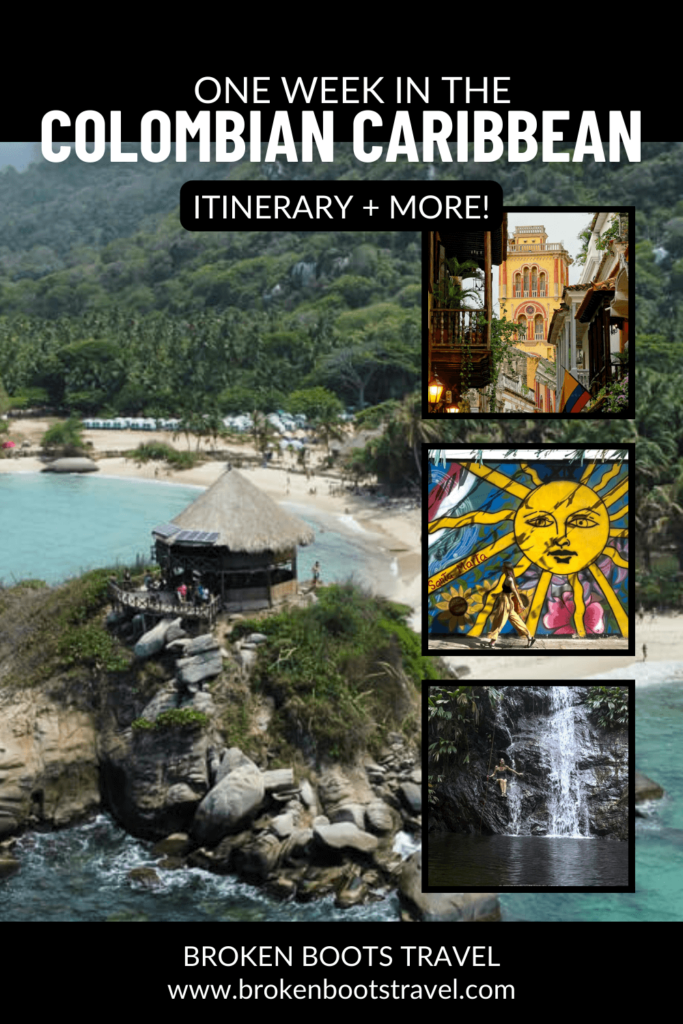
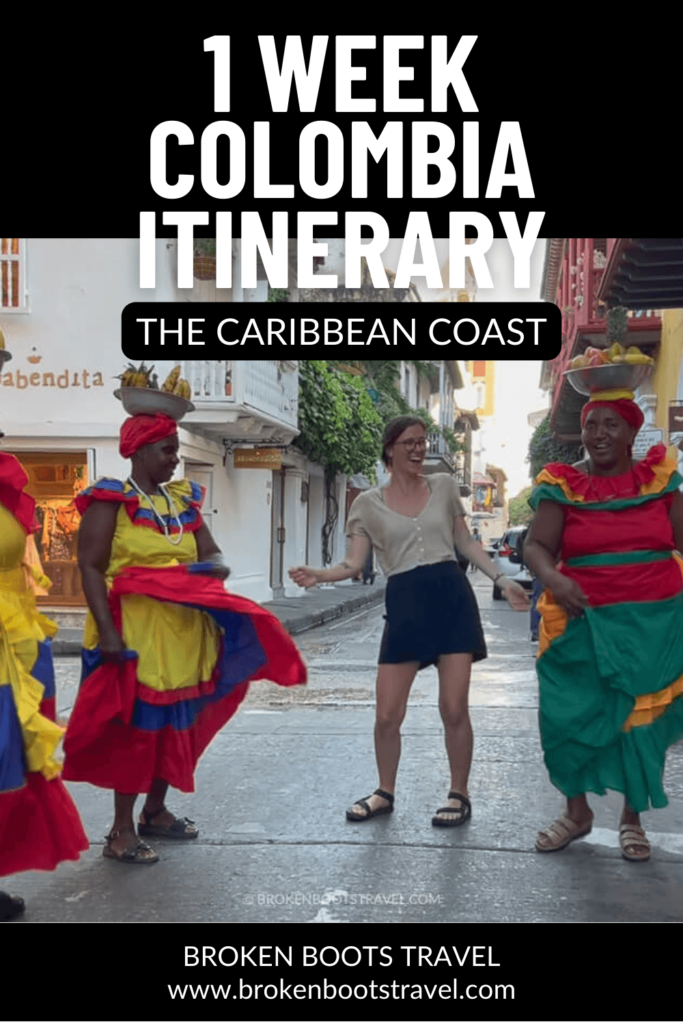
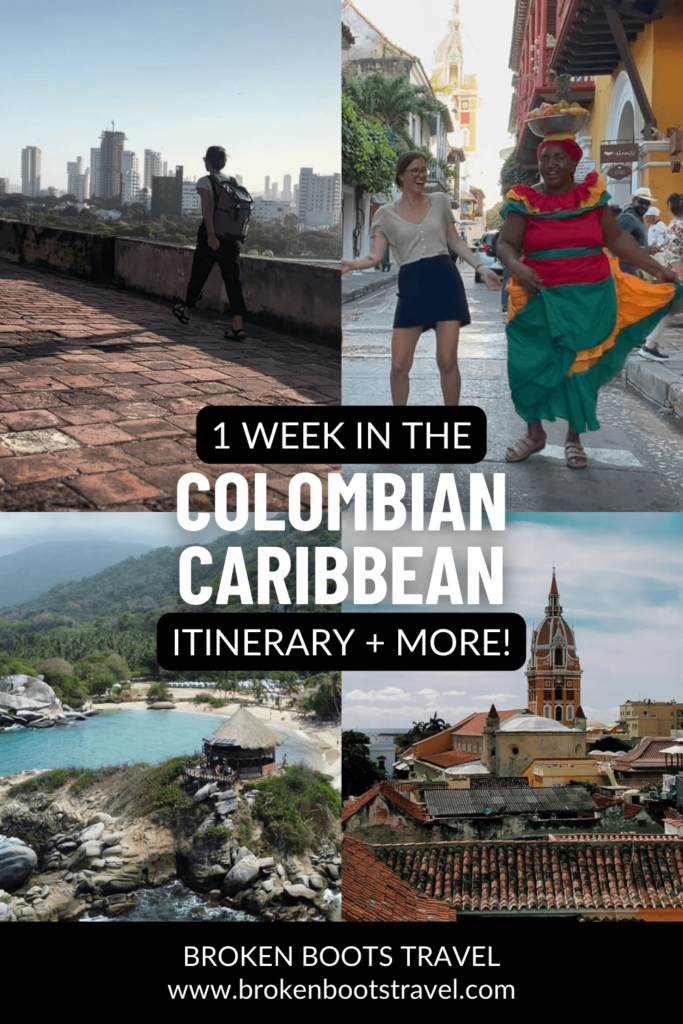
Love stories? Subscribe to my newsletter to get my latest updates delivered straight to your inbox every month. One email a month + no spam? Sign me up!
Virginia Taylor (Ginna) is a travel writer and photographer exploring the world until her boots wear through. She’s currently on a mission to explore all 32 departments of Colombia, though she formerly called the Middle East home. Want to know more? Visit the About Page.
Pingback: Colombia's Lost City Trek: Everything You Need To Know